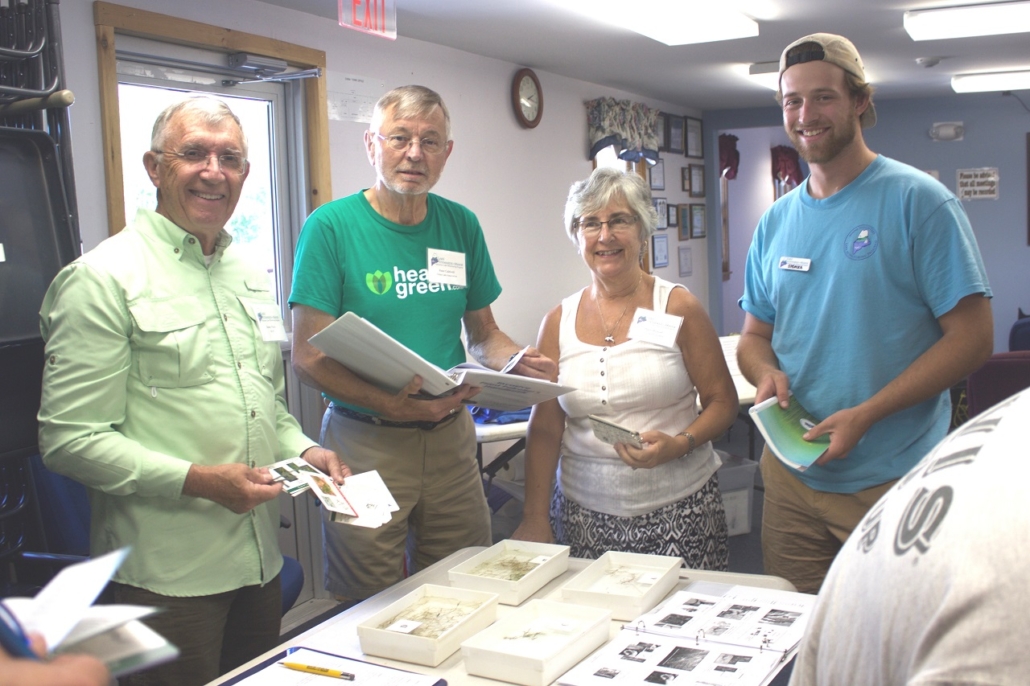
The above poster is by Alyssa Willey, of Warren, who was the 2019 Windsor Fair Poster Contest winner.
Windsor Fair 2019
Sunday, August 25 through Labor Day, September 2
GATES OPEN 9 a.m. DAILY
Sunday, August 25, “Get Acquainted Day”
Gates Open 9:00 A.M.
Gate Admission Adults – $10.00, 15 and Under are Free.
Harness Horse Racing – Post Time 1:00 P.M.
Giant Midway Opens at 1:30 P.M.
9:15 A.M. All Day Ancient Ones of Maine – Living History – Windsor Historical Society 9:15 A.M. Giant Pumpkin/Squash Contest – Registration & Weigh in – (Ag. tent)
9:30 A.M. Draft Horse & Draft Pony Show – (Outside Show Ring)
9:30 A.M. Steer & Oxen Scooting Contest, Dept. 6, Lots 1&2 – (Vanner Pulling Ring) 10:00 A.M. The Maine Classic – Open Boar Goat Show followed by Youth Boer Goat Show (Prime Show Barn)
10:00 A.M. Poultry Show – (Poultry Building)
1:00 P.M. Poultry Showmanship (Poultry Building)
2:00 P.M. Windsor Fair Charity Beano Game – (Beano Hall)
5:00 P.M. Maine Junior Holstein Show – (Prime Show Barn)
7:00 P.M. Demolition Derby #1 – Sign up at Gate 5 at 4:00 P.M. ($20.00 Entry Fee)
Sponsored by “Paul’s Pick-A-Part” of Chelsea, Maine
Monday, August 26 “24th Annual Woodsmen’s Day”
Gates Open 9:00 A.M.
Gate Admission Adults – $10.00 – Seniors (60+) $5.00, 15 and Under are Free
Harness Horse Racing – Post Time 3:00 P.M.
Giant Midway Opens at 1:00 P.M.
9:15 A.M. Maine State Holstein Show – (Prime Show Barn)
9:30 A.M. Woodsmen’s Field Day Events – Check-in and number must be picked up prior to 9 A.M. 10:00 A.M. Show Steer & Oxen Log Twitching Contest – (Outside Show Ring)
12:30 P.M. Maine State Jr. Holstein Pee Wee Showmanship – (Prime Show Barn)
1:00-9:00 P.M. Purchase your bracelet for $23.00 per person, ride until 10:00 P.M.
1:00 P.M. Show Steer & Oxen Log Twitching Contest – (Outside Show Ring)
2:00 P.M. Windsor Fair Charity Beano Game – (Beano Hall)
7:00 P.M. 4-WD Pickup Pulls followed by Monday Night Pulling – 10,500, 12,500, 14,500, 16,500 Stock Farm Tractors, Mini Modified, (Race Track – Infield)
Tuesday, Aug. 27 “Horsemen’s Day”
Gates Open 9:00 A.M.
Gate Admission Adults – $10.00, 15 and Under are Free.
Harness Horse Racing – Post Time 3:00 P.M.
Giant Midway Opens at 1:00 P.M.
9:15 A.M. Show Steer & Oxen 6 Ft. Percentage Pull, Dept. 4, Class M – (Vanner Arena) 9:30 A.M. 4-H Horse Show – (Outside Show Ring)
1:00-9:00 P.M. Purchase your bracelet for $23.00 per person, ride until 10:00 P.M.
2:00 P.M. Windsor Fair Charity Beano Game – (Beano Hall)
2:30 P.M. Garden Tractor Pulls – (Vanner Arena)
3:00 P.M. Donkey Show – (Prime Show Barn)
6:00 P.M. Pig Scramble – 8 year olds – (Vanner Arena) Must enter before 5:45 P.M. at the Information Booth – 12 Entries will be drawn
7:00 P.M. Tuesday Night Pulling – 7,000 Gas PU MSTTPA Rules, 2.5 Street Diesel PU, 2.5 Work Stock Diesel, 3.0 Pro Stock Diesel PU, 2X4 S/STK PU, 4X4 S/STK, 4X4 Modified PU, Pro Farm Tractors, Super Farm Tractors. (Race Track – Infield)
Wednesday, Aug. 28, “Vendor Appreciation Day & Half Price ‘Gate & Ride’ Day”
Gates Open 9:00 A.M.
Gate Admission Adults – $5.00, 15 and Under are Free.
Harness Horse Racing – Post Time 3:00 P.M.
Giant Midway Opens at 1:00 P.M.
9:15 A.M. Show Steer & Oxen 6’ Percentage Pull, Dept. 4, Class N – (Vanner Arena) 10:30 A.M. Judging of Show Sheep – (Prime Show Barn)
1:00 P.M. Show Steers & Oxen’s Log Scooting Contest – (Outside Show Ring) Show Steers Only 1:00 P.M. Farmers Horse Twitching, Scooting (Vanner Arena)
1:00-9:00 P.M. Purchase your bracelet for $12.00 per person, ride until 10:00 p.m.
1-5:00 P.M. Accepting Apple Pies & Registration in the (Rt. #32 Roadhouse)
2:00 P.M. Windsor Fair Charity Beano Game – (Beano Hall)
4:00 P.M. Parade of Champions – Overall Grand Champion Sheep (Prime Show Barn)
6:00 P.M. Maine 2 Crusted Apple Pie Contest at (Rt. #32 Roadhouse)
6:00 P.M. Pig Scramble – 9 year olds – (Vanner Arena) Must enter before 5:45 P.M. at the Information Booth – 12 Entries will be drawn
7:00 P.M. Farmer’s Distance Horse Pull followed by the Farmer’s 12 FT Short Pull – (Vanner Arena). Must weigh-in at 9:00 A.M.
9:00 P.M. Fireworks (Grandstand)
Thursday, Aug. 29 “Senior Citizens’ Day” (60+) $5 and Veterans Day
Gates Open 9:00 A.M.
Gate Admission Adults – $10.00 – Seniors (60+) $5.00, 15 and Under are Free.
Harness Horse Racing – Post Time 3:00 P.M.
Giant Midway Opens at 1:00 P.M.
9:15 A.M. Steer Pulling – 16 yrs old & Under – Steer Under 1300 lbs. – (Vanner Arena) Open Pulling –
1700 lbs and Under
2100 lbs. and Under
2500 lbs. and Under
2900 lbs. and Under
3300 lbs. and Under
9:30 A.M. Judging of Dairy Cattle – (Prime Show Barn)
10:00 A.M. Veterans Day Ceremony – (Entertainment Area) (Veterans with ID get in free) 11:30 A.M. Sheepdog Demonstration – (Outside Show Ring)
1:00-9:00 P.M. Purchase your bracelet for $23.00 per person, ride until 10:00 P.M.
1:00 P.M. Oxen – 3700 lb & 4100 lbs Class – If no 2 legitimate teams in the class, they will pull in the 3700, with added weight and adjusted premiums. Sweepstakes distance pull – (Vanner Arena)
1:30 P.M. Sheepdog Demonstration – (Outside Show Ring)
2:00 P.M. Windsor Fair Charity Beano Game – (Beano Hall)
3:30 P.M. Sheepdog Demonstration – (Outside Show Ring)
4:00 P.M. Parade of Champions – Overall Grand Champion Dairy – (Prime Show Barn) 6:00 P.M. Pig Scramble – 10 year olds – (Vanner Arena). Must enter before 5:45 P.M. at the Information Booth – 12 Entries will be drawn
7:00 P.M. Oxen pulling – 3700 lb 6FT. Over & Under – Merle Vanner Memorial Trophy – (Vanner Arena)
7:00 P.M. Demolition Derby #2 – (Race Track Infield) – (Signup at Gate #5 at 4:00 P.M. – $20.00 Entry Fee) Sponsored by “Paul’s Pick-A-Part” of Chelsea, Maine
Friday, Aug. 30 “Livestock Appreciation Day”
Gates Open 9:00 A.M.
Gate Admission Adults – $10.00, 15 and Under are Free.
Harness Horse Racing – Post Time 3:00 P.M.
Giant Midway Opens at 12:00 Noon
9:15 A.M. New England Jumpers Association Horse Show- (Outside Show Ring) 9:30 A.M. Judging of Beef Cattle – (Prime Show Barn)
11:00 A.M. Horse Pulling – 2lb Rock – Open to any weight Sponsored by “Vigue Family)
(Vanner Pulling Arena)
12:00-9:00 P.M. Purchase your bracelet for $23.00 per person, ride until 10:00 p.m.
1:00 P.M. Horse Pulling – 3000 lb & Under Distance Pull (Vanner Pulling Arena)
2:00 P.M. Windsor Fair Charity Beano Game – (Beano Hall)
4:00 P.M. Parade of Champions – Overall Grand Champion Beef – Male & Female (Prime Show Barn)
6:00 P.M. Horse Pulling – 3000 lb & Under 12FT. Pull – (Vanner Pulling Arena)
“John Kelley Memorial Pull”
Sponsored by Augusta Tool Rental & Pro Rental of Rockport, Maine
7:30 P.M. Juston McKinney Admission $5 – Grandstand – followed by Fireworks
Saturday, Aug. 31 “4-H Day”
Gates Open 9:00 A.M.
Gate Admission Adults – $10.00, 15 and Under are Free.
Harness Horse Racing – Post Time 1:00 P.M.
Giant Midway Opens at 12:00 Noon
9:30 A.M. 4-H Sheep Show – (Prime Show Barn)
10:00 A.M. 4-H Working Steers – (Outside Show Ring) 10:00 A.M. Youth Rabbit Show
12:00 noon Youth Market Baby Beef Show (Prime Show Barn)
1:00 P.M. Ladies Fry Pan Throwing Contest (Park Area)
1:00 P.M. Horse Pulling – 3200lb & Under Distance Pull (Vanner Arena)
Sponsored by Gagne & Sons Concrete Block, Belgrade, Maine
2:00 P.M. Windsor Fair Charity Beano Game (Beano Hall)
2:30 P.M. Youth Market Lamb Show (Prime Show Barn)
2:30 P.M. Horse Pulling – Three Horse Distance Pull (Vanner Arena)
5:00 P.M. Youth Market Hog Show (Prime Show Barn)
6:00 P.M. Painted Pumpkin Face Contest at the Exhibition Hall.
7:00 P.M. Horse Pulling – 3200 lb & Under 12 FT. Pull – (Vanner Arena) “O. D .Lee Memorial Pull”.
Sponsored by Emily’s Restaurant.
7:00 P.M. Monster Truck Show – Admission $5.00 – (Grandstand)
Sunday, Sept. 1 “Museum & Children’s Day”
Gates Open 9:00 A.M.
Gate Admission Adults – $10.00, 15 and Under are Free.
Harness Horse Racing – Post Time 1:00 P.M.
Giant Midway Opens at 12:00 Noon
9:15 A.M. Judging of Show Steers & Oxen – (Outside Show Ring)
9:15 A.M. All Day Ancient Ones of Maine – Living History – Windsor Historical Society 9:15 A.M. 4-H Beef Show – (Prime Show Barn)
10.00 A.M. 4-H Dairy Show – (Prime Show Barn)
10.00 A.M. 1st Annual Cornhole Tournament (Memorial Park)
10:00 A.M. Church Services – (Entertainment Area)
11:30 A.M. Kiddie Tractor Pull – (Vanner Pulling Arena)
Must enter between 9:00 A.M. & 11:00 A.M. at the Information Booth
Girls: 25-35 lbs & 36-45 lbs. Boys: 25-35 lbs & 36-45 lbs.
2:00 P.M. Horse Pulling – (Vanner Pulling Arena)
3400 lbs & Under Distance Pull – Sponsored by R&R Windows – Followed by 2 lb Rock – Open any Weight
2:00 P.M. Windsor Fair Charity Beano Game – (Beano Hall)
4:00 P.M. Animal Costume Class – (Prime Show Barn)
5:00 P.M. Bicycle Drawing – Ten Free Bicycles – (Across from Beano Hall)
6:00 P.M. Youth Sheep Obstacle Course – (Prime Show Barn)
7:00 P.M. Children’s Baking Contest – Exhibition Hall
7:00 P.M. Horse Pulling – 3400 lb & Under 12 ft Pull – (Vanner Pulling Arena)
7:00 P.M. Monster Truck Show – Admission $5.00 – (Grandstand)
Monday, Sept. 2 “Labor Day”
Gates Open 9:00 A.M.
Gate Admission Adults – $10.00, 15 and Under are Free.
Harness Horse Racing – Post Time 1:00 P.M.
Giant Midway Opens at 12:00 Noon
9:15 A.M. Horse Barrel Racing – Outside Show Ring
9:15 A.M. – 1:00 PM. – Windsor Fair Hanging Plants Sale (benefit the Town of Windsor’s Veterans Memorial Fund)
11:00 A.M. Antique Car Show & Parade – MOAL Members Only – Windsor Fair Park
11:00 A.M. Horse Pulling – Sweepstakes Distance Pull – (Vanner Arena) “Merle Vanner Memorial Trophy” Sponsored by; Dick’s Used Trucks – Chelsea, ME & Dick Condon – Chelsea, ME
12:00-5:00 P.M. Purchase your bracelet for $23.00 per person, ride until 6:00 p.m.
12:00 P.M. Youth Baby Beef Sale – Followed by Youth Market Lamb Sale – followed by Youth Hog Sale (Prime Show Barn)
1:30 P.M. Horse Pulling -3600 lb & Under Distance Pull – Followed by Special Elimination Sweepstakes 12 Ft. Pull (Vanner Arena) Sponsored by; Dick’s Used Trucks, Chelsea, ME & Dick Condon, Chelsea, ME
2:00 P.M. Windsor Fair Charity Beano Game – (Beano Hall)
ENTERTAINMENT HEADLINERS SCHEDULE 2019
Sunday the 25th
11:30 – 1:30 Walter Weymouth
11:30 – 1:30 Country Gentleman – Rt. 32 Road House
2:30 – 4:30 Chris Poulson & Company
2:30 – 4:30 B S Entertainment – Rt. 32 Road House
5:30 – 7:30 Working Class
7:00 p.m. Demolition Derby #1 (Grandstand)
Monday the 26th
1:00 – 3:00 Present Company
4:00 – 6:00 Rippleton Cross
7:00 p.m. Truck & Tractor Pulling (Grandstand)
Tuesday the 27th
1:00 – 3:00 Gelina/Pike – Mainly Blue Grass
4:00 – 6:00 Taylor Road
7:00 p.m. Truck & Tractor Pulling (Grandstand)
Wednesday the 28th
12:00 – 2:00 Delighted Soul
3:00 – 5:00 Frye Mountain Band
6:00 – 8:00 Sharon Hood & Dixon Road
9:00 p.m. Fireworks (Grandstand)
Thursday 29th
10:00 – 12:00 Veteran’s Ceremony
12:30 – 2:00 The Hyssongs
3:00 – 5:00 Spare Parts
6:00 – 8:00 Steve & The Good “Old” Boys
7:00 p.m. Demolition Derby #2 (Grandstand)
Friday the 30th
11:30 – 1:30 Country Mist
2:30 – 4:30 Milltown Roadshow
5:30 – 7:30 Wild Horse Band
7:30 p.m. Juston McKinney, $5.00, followed by Fireworks (Grandstand)
Saturday 31st
11:00 – 1:00 Jim Gallant – Rt. 32 Road House
12:00 – 2:00 The Mainely Country Band
12:00 – 5:00 “Sweetums” Clown Lady
2:00 – 4:00 Simons & Goodwin – Rt. 32 Road House
2:00 – 4:00 Kora Klowns (strolling)
3:00 – 5:00 Rockit Band
5:00 – 7:00 Meghan Clark – Rt. 32 Road House
6:00 – 8:00 Undercover Band
7:00 p.m. Monster Trucks – $5 (Grandstand)
Sunday the 1st
10:00 – 11:00 North Windsor Baptist Church Service
11:00 – 1:00 Jack Duggins – Rt. 32 Road House
12:00 – 1:00 Dana Perkins Magic Show
12:00 – 5:00 “Sweetums” Clown Lady
2:00 – 4:00 Dave Michaud, Elvis Act – Rt. 32 Road House
2:00 – 4:00 Andy Happel Band (fiddler)
4:00 – 6:00 Down East Brass (Strolling)
5:00 – 7:00 Davidson County Line
7:00 p.m. Monster Trucks – $5 (Grandstand)
Monday the 2nd
11:00 – 1:00 Court Jesters – Rt. 32 Road House
11:00 – 1:00 New Relm
2:00 – 4:00 Sue Deane Karaoke – Rt. 32 Road House
2:00 – 4:00 Silver Fox Dancers
Historical Society Museum Open Daily (Free Admission)
Gate Opens 9 a.m. Every Day
Free Parking Every Day!
All Rides Have Height Requirements
Horse, Oxen, Steer and Tractor Pulls – Daily
SEASON PASSES ARE $63.00, AND MAY BE PURCHASED AT GATES 1 & 4.
207-549-7911 • 207-549-5249













